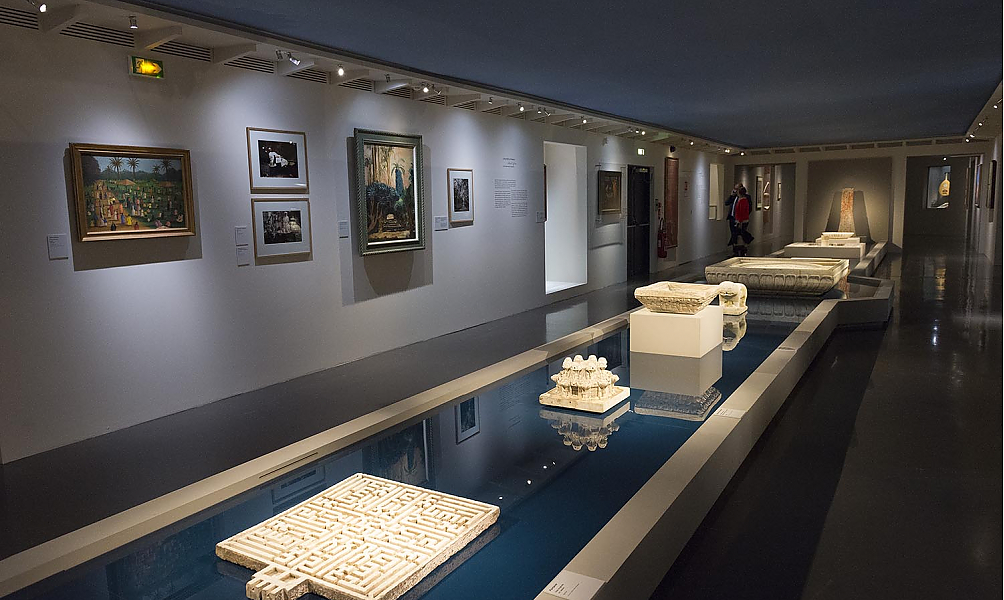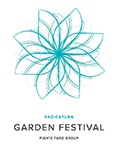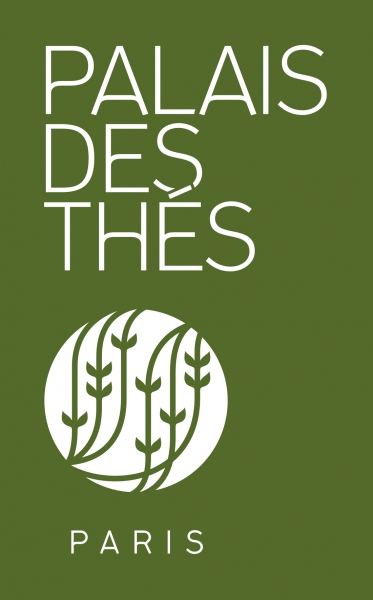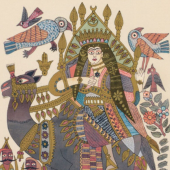Oriental Gardens
- 19 April 2016 to 25 September 2016
Did you know that the tulip—well before becoming the symbol of Holland—was the emblem of the Ottoman sultans? And did you know that the public park is a recent innovation in the Orient? And that it is now at the cutting edge of sustainable development projects in megacities in the Arab world? Did you know that in one of the ancient languages of Persia, the word for garden (pairidaeza) is the origin of the word ‘paradise’?
Come and discover the extraordinary history of Oriental gardens … in a garden: as a complement to the exhibition, the AWI forecourt will contain an exceptional ephemeral garden. The landscape architect Michel Péna was commissioned to create this contemporary interpretation of Oriental gardens, and the resulting garden, with its many facets of a thousand-year-old art, is a highly enjoyable and sensorial experience. Visitors will be able to idly stroll along the alleys of roses, orange trees, palm trees, and jasmine, before discovering the immense vegetal anamorphosis designed by François Abelanet.
From the garden of the senses to sustainable development
Inside The Arab World Institute, an exhibition in five parts will retrace the history of Oriental gardens from earliest antiquity to the most contemporary innovations, from the Iberian Peninsula to the Indian subcontinent. The exhibition itinerary comprises 300 works of art loaned by major international museums and private collections, along with models, enormous photographic prints, and ingenious models that underline the important role played by the engineers of the past in creating gardens.
Every aspect of the art of gardens—whether private or public—will be explored, from a cultural, historical, technical, botanical, environmental, and social perspective: the exhibition will analyse the sources of inspiration of the Oriental garden and its codes and variations, and explore the links forged with Western gardens over the centuries. It will also address the role nature has to play in major contemporary cities as a modern urban feature and in environmental sustainability.
From the Hanging Gardens of Babylon to the Al-Azhar Park in Cairo, the Alhambra in Granada to the Trial Garden of Algiers, and from the princely garden to the garden for everyone … they are all part of a fascinating itinerary, whose central feature is the essence of all life in gardens: water, of course!
 IMA / Thierry Rambaud
IMA / Thierry Rambaud Inscription à la newsletter
Pour recevoir toute l'actualité de l'Institut du monde arabe sur les sujets qui vous intéressent
Je m'inscris







































